A Travelers Guide to Filipino Food
A Filipino Food Guide
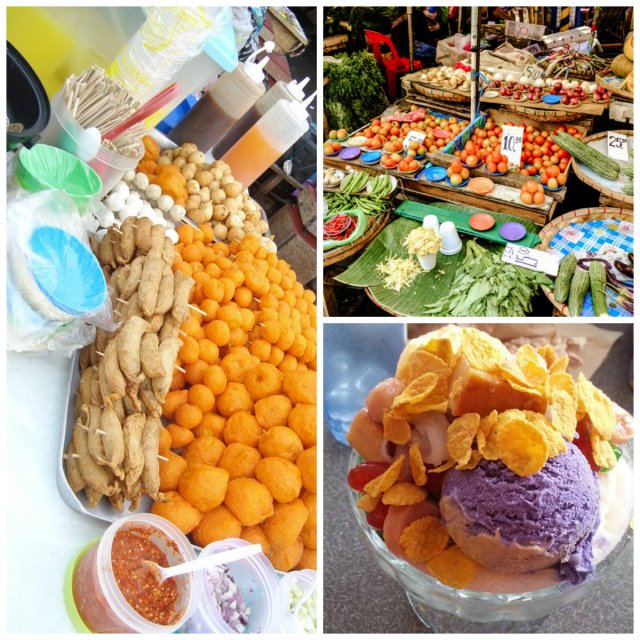
Often times beautiful beaches, stunning women and jaw-dropping epic sceneries are reason enough for thousands of beach-going, single men and photography enthusiasts to hop on a plane to explore the Philippines every year. But the islands of the Philippines has so much more to offer such as savory food dishes and wide-eyed smiling faces more than eager to invite you into their home for a festive evening of good food and good times.

Around the world, famously known foods can be found in pretty much every country. For Filipino food, you might have heard of Adobo, Lumpia, or Balut. Those are just 3 of the endless varieties of fabulous foods you will find on the 7,107 islands of the Philippines.
Your options are endless it seems, from your home cooked dishes to street food just around every corner, to the local fish market, to the local grocery and even international food chains like McDonald's or KFC. Filipino foods is a melting pot of Spanish, Chinese, and American inspired cuisine.
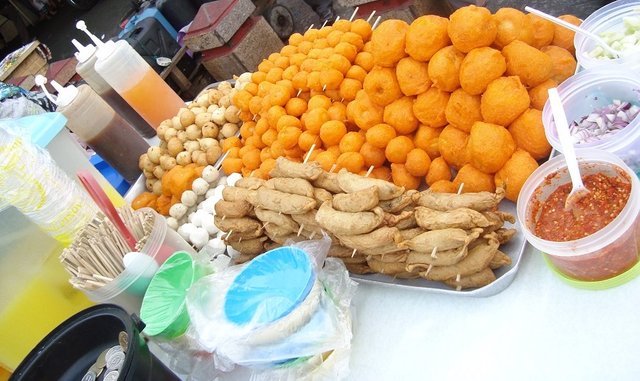
You would think with access to fresh vegetables and fruits the diet of the Philippines would be extremely healthy. When looking at the top 20 commonly consumed food products among Filipino households, we start to see a bit different picture. The main food staple remains rice, which is high in carbs and natural sugars which can lead to diabetes. Salt is number 2 on the list followed by oil. Below is a list of the top 20 food sources for Filipino families according to the Food and Nutrition Research Institute of the Department of Science and Technology [FNRI-DOST].
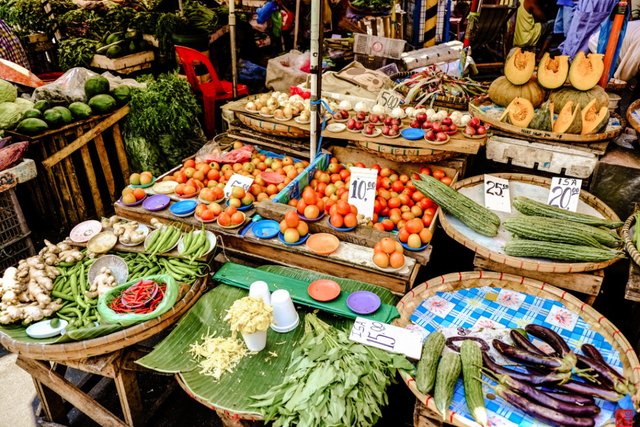
- Rice 2. Salt 3. Cooking Oil 4. Coffee 5. Sugar 6. Bread 7. Onion 8. Garlic 9. Chicken Egg 10. Soy Sauce 11. Pork Meats 12. Vinegar 13. Vetsin 14. Instant Noodles 15. Chicken 16. Biscuits 17. Tomatoes 18. Eggplant 19. Powdered milk 20. Banana
Filipino Food in the Home
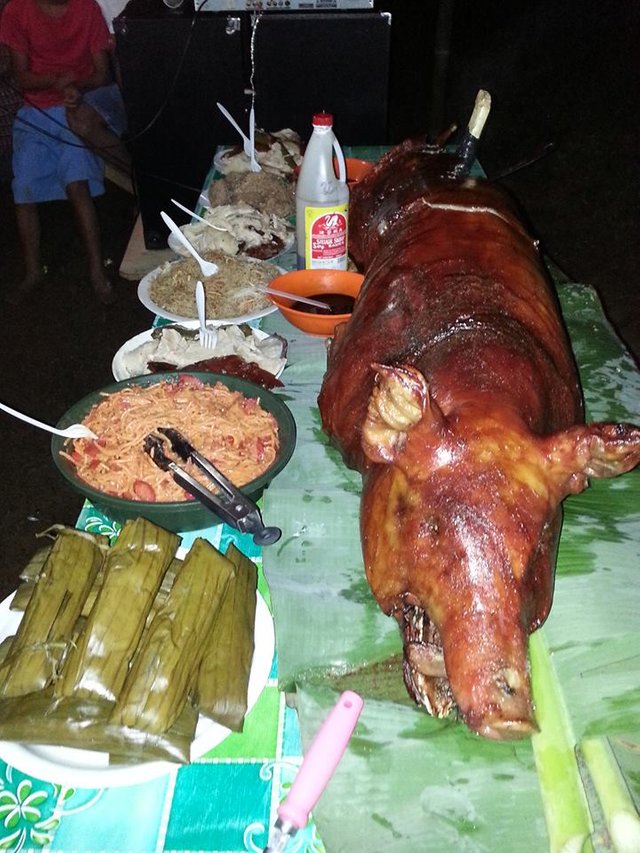
Now that we have a general idea of the kind of food products most common in the Philippines, let's take a look at dishes and what they consist of. These are dishes that would be commonly found in a Filipino home. Experiencing the best food the Philippines has to offer means pulling up a chair next to a Filipino family and enjoying their smiling faces and hospitality. Filipinos are truly some of the most hospitable people in the world, willing to share an evening of food, laughter, and karaoke.
Balut:
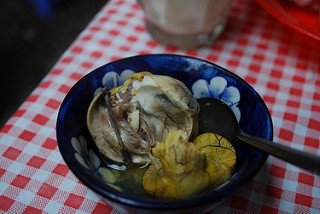
photo credit: Balut via (license)
A common street food in the Philippines. It is a fertilized duck embryo eaten in the shell with a little salt and vinegar. The egg is considered perfect at day 17 of the egg growth cycle, right before the growth of the beak, feet, and feathers.
Halo-Halo:
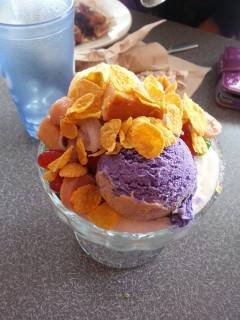
A popular dessert with mixtures of shaved ice and evaporated milk, various boiled sweet beans, jello, and fruits. Perfect for the hot and hotter days in the Philippines.
Pansit:
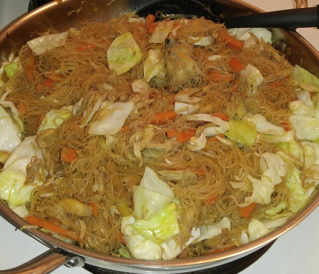
Rice noodles with vegetables and pork or chicken. A very common home dish for most Filipino Families. A real comfort food. Some believe you should eat pancit on your birthday to live a longer healthier life.
Bagoong:
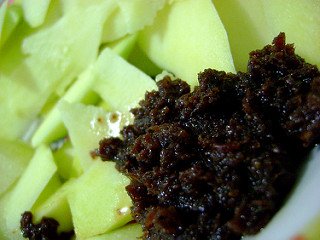
A Philippine condiment made of fermented fish or tiny shrimps. Often called shrimp paste.
Adobo:
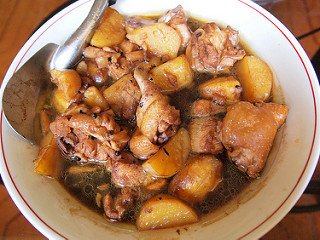
(pork or chicken) marinated in soy sauce and vinegar. A Filipino comfort food and one of the world's most famously known Filipino flavors.
Sinigang:
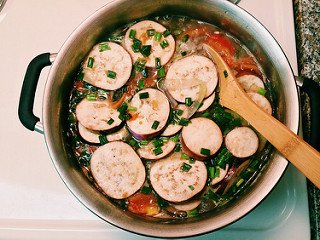
A sour pork or beef soup or stew, tamarind is generally used as the souring ingredient. Varies by region, ginger is sometimes added.
Afritada:
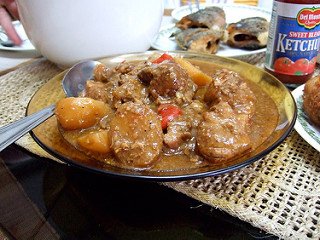
A thick meat stew with peppers, onions, tomatoes or tomato paste, and potatoes.
Kare-Kare:
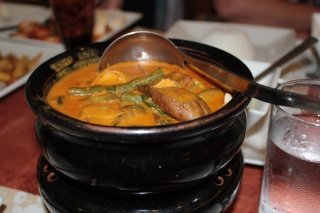
Oxtail stew with banana blossoms cooked in a thick peanut sauce. Sometimes made from a base of stewed oxtail, pork hocks, calves feet, pig feet, or beef stew meat. A wide range of variation of this dish will be found.
Escabeche:
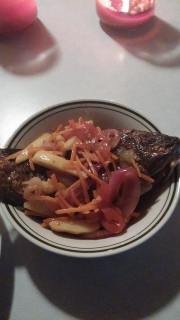
A fried and sauteed sweet and sour fish dish with a few vegetables, such as carrots and red pepper.
Lumpia:
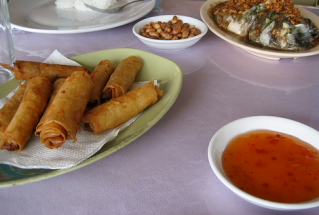
Besides adobo, lumpia probably is the next best well-known food around the world from the Philippines. Lumpia is made with a lumpia wrapper (dipped in an egg to help it stick together) filled with many fillings like chopped vegetables ( carrots, cabbage ), meats ( chicken, beef, pork, shrimp). It is then deep-fried or sometimes fresh and not fried.
Caldereta(Kaldereta):
A dish made with either goat meat or beef. Its distinguishing ingredients include tomato paste, coconut milk, and liver paste. Several variations of this dish are found depending on the region.
Kilawin:
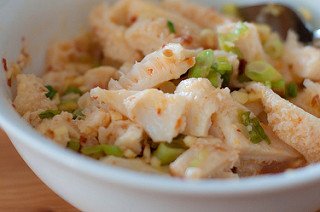
This is basically raw fish marinated, with a souring agent such as vinegar then dipped in a condiment of choice.
Daing:
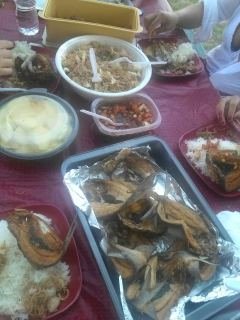
(dried fish) A preservation technique, as salt inhibits the growth of bacteria, allowing fish be well preserved for long periods of time. Usually simply fried before consumption and served with rice and a dip (usually vinegar.) Daing is sometimes a breakfast food served with fried eggs.
Embutido:
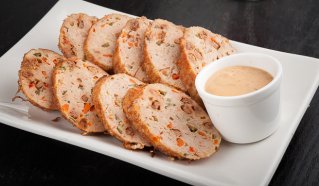
This is an equal to a US meatloaf. Embutido is made with pork, chicken or even turkey. Often times you find many different ingredients in a Filipino style meatloaf from eggs, carrots to even pineapple.
Ginataan:
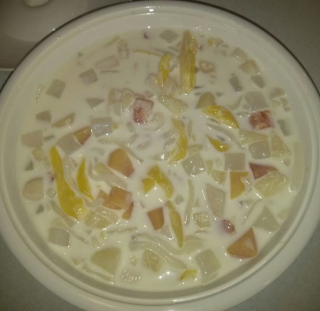
This is a general term associated with Filipino food dishes that use coconut milk as an ingredient as a soup base then adding sweet things like sweet potato, manioc, sago, banana, coconut cream, jackfruit, and rice flour balls. It is considered a dessert.
Longanisa:
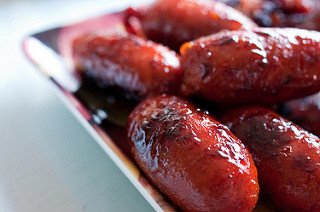
Sweet-and-sour pork sausage. Flavored with local spices, with each region having its own variations. Varieties from salty, sour and sweet are found around various parts of the Philippines.
Paksiw:
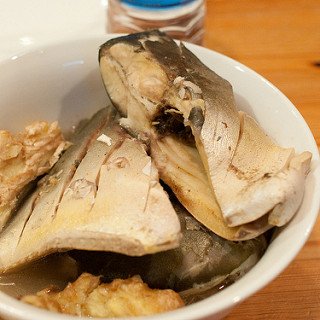
Generally, this is a term referred to a soup or stew cooked in vinegar. A common dish would be fish soup. Paksiw is a basic dish with vegetables sometimes added with the fish or any other meat cooked with the vinegar.
Pochero:
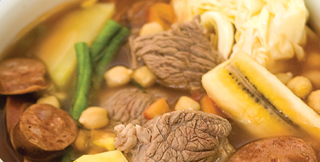
Chicken and pork stew with bananas and vegetables. This is a Spanish-inspired dish. A wide range of vegetables is used in this dish, including onion, potatoes, carrots, squash, sweet potatoes, cabbage, and sometimes rice as well.
Relyenong bangus:
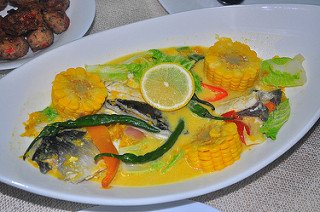
A unique way of preparing fish. By skinning, deboning, removing the meat and re-stuffing the fish you get a uniquely flavored dish. Sometimes called milkfish, milkfish has a variety of ingredients stuffed inside with the fish meat and then placed back in the skin before frying.
Tinola:
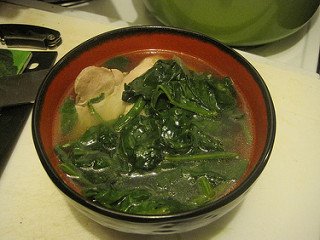
Chicken stew with papaya is the traditional way of preparing this dish. Sometimes a common vegetable called kamunggay can be used.
Torta:
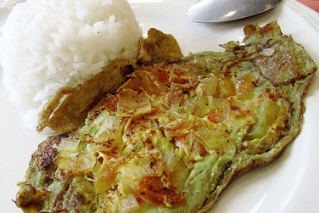
In some parts of the Philippines, this dish refers to a morning omelet made with eggs, ground meat and minced onion and potato. In the Visaya regions, this is a type of cake with from ingredients that basically consist of flour, egg yolks, milk, fresh coconut sap as a sweetener, lard as shortening, and a bit of salt. Recipes vary widely by region and even from family to family.
Ukoy:
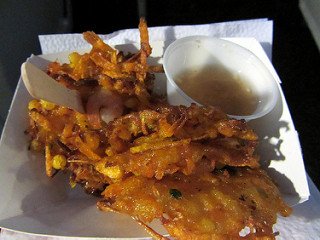
These little treats are made of small shrimps and mixed with a batter and fried. It is a crispy snack.
Tapsilog:
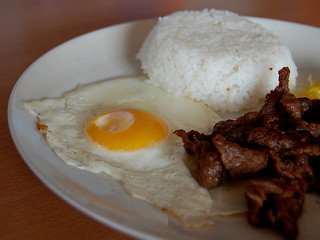
Made of tapa (dried fish) or dried beef, sinangag (fried rice) and itlog (egg). Very common breakfast found in a lot of Filipino homes.
Filipino Food on the Streets
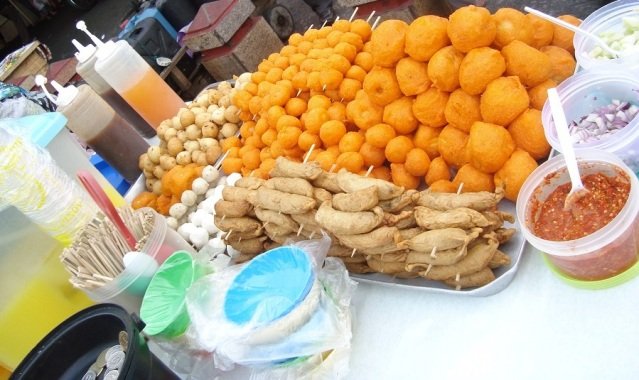
I have read several articles from people who haven't experienced the best foods in the Philippines. It seems most of the bad experiences come from Filipino food found from street vendors. You defiantly want to use street smarts when buying food from the street vendors. It is very hot in the Philippines, and refrigeration isn't always available. Also, you will notice a great deal of flies swarming around food areas, unless there are some fans blowing. It seems almost impossible to avoid these pesky little buggers.
Some of the best fresh fish caught overnight while you were sleeping can be found in the street food markets. Grab yourself some and cook it up for some of the best tasting fresh seafood you have ever had. Buying from the street markets is defiantly buyer beware. Make sure to look over the product well before purchasing it.
Some Filipino street foods I challenge you to try in the Philippines ....
1. Balut

photo credit: Balut via (license)
Balut is famously known around the world as an "I dare you to try this" Filipino food. It's even been on a popular food show airing in the United States. From the outside, Balut looks like your typical hard-boiled egg, but what lives inside is what makes this challenge special. Around 17 days after fertilization, you are given a fertilized duck egg with a little side condiment of vinegar.
First, you will start by cracking a small hole on top of the egg and suck the juices in. Next, you will peel half the shell off and dip it in a little salt and vinegar. Continue eating the partially developed duckling without thinking about all the little parts you might see. You have now been hazed into Filipino street food, great job!
2. Banana-Que
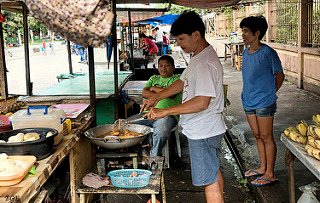
Considerably less daring than Balut, the Banana-Que is a snack food of deep-fried banana in a caramelized sugar coating. Placed on a skewer stick and sinfully sweet.
3. Kwek-Kwek
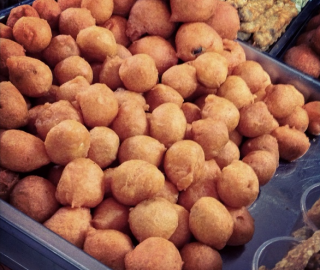
Wrapped up in a ball is a boiled quail egg battered in a bright orange batter and deep-fried. As you bite into a kwek-kwek you will notice the outside having a nice crispy texture and nice soft inside. From experience, kwek-kwek is best eaten as soon as they are prepared to avoid getting soggy from all the oil. A side of vinegar to dip in is also an option. This snack can also be prepared with chicken eggs as well.
4. Adidas
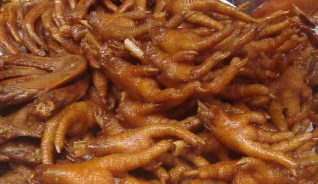
Don't confuse this with an old cooked up pair of basketball shoes. Adidas are chicken feet that have been grilled and placed on a stick. Typically you will take a bite and eat the edible parts and discard parts of the feet that are not. Adidas seems to have roots from Chinese cuisine.
5. Betamax

I am not going to lie to you, Betamax will sound disgusting, we still challenge you to try it. You just might enjoy grilled chicken blood that is shaped into cubes. Betamax is prepared by talking fresh chicken blood and letting it cool until it becomes a gelatin-like substance. It is then cut into cubes or rectangles and cooked over a fire on a BBQ grill. Have you heard the saying "it tastes like chicken?"
6. Fishballs
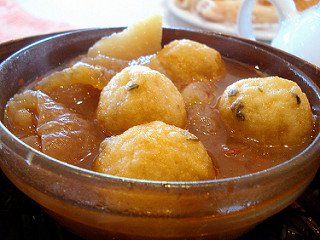
Surrounded by the ocean, it isn't surprising fish is an abundant food source in the Philippines. One of the most popular and affordable Filipino street foods is Fishballs. We only challenge you to try because the name "fishballs" sounds like a challenge in itself. I believe in the States a similar challenge would be called Rocky Mountain Oysters. Really fish don't have balls, and fishballs are not made of the fishes balls.
Fishballs are essentially ground up fish shaped into balls then deep fried to perfection. Fishballs are enjoyed with a variety of side condiments like vinegar, sweet and sour sauce, or anything else you would enjoy dipping fried fish in.
7. Isaw
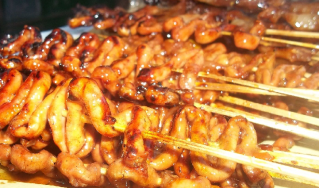
Getting past the word intestine might prove to be too hard for some for this challenge. Thoroughly cleaned, and boiled to rid the intestines of bacteria, Isaw is placed on a BBQ skewer and grilled. Like fishballs, you can dip these in any variety of condiment you prefer. Vinegar or spicy vinegar is the recommended way.
8. Walkman
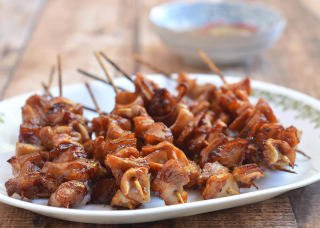
In the Philippines, poverty has given way to the people being resourceful with food. Finding any way possible to cook and use all parts of the animal. Walkman is chopped up bite-sized pieces of pig ear grilled. Other parts of the pig are also grilled up and sometimes chopped up finely into a hash and mixed with spices and onion. The helmet is another example of the Filipinos being resourceful. The helmet is the chicken head barbecued where the fatty portions of the head and even brains are sucked out.
Last but not least, I challenge you to try Halo-Halo. You defiantly won't have a problem scarfing done this sweet treat on a hot day in Manila. You won't be the least bit disappointed.

Restaurants Chains in the Philippines
Does traveling in or maybe living in the Philippines scare you a little bit because you might not be able to enjoy some of the same restaurant foods you did in your homeland? Oh, but there is no need to worry, especially if you are from the U.S. There are numerous international chains found in most of the medium and large cities. Here is a list of some of the most recognized international restaurant food chains you may find in the Philippines.

Address: Estancia Mall, Capitol Commons, Oranbo, Pasig, 1603 Metro Manila, Philippines
Phone: +63 2 632 7489
Below is a list of Philippine Restaurant Chains you just might want to check out during your travels.

Chowking -Made fresh, served fast, and affordably priced – savor a harmony of Chinese flavors.

Goldilocks Bakeshop -With each product purchased and consumed, customer's
don't merely get a delicious slice of cake or a scrumptious dish, but a taste of something truly Pinoy.

Greenwich Pizza - The Philippines favorite and the largest pizza chain. They give you a scrumptious blend of exciting pizza and pasta innovations, all prepared for the comfort of the Filipino taste.

Jollibee -Jollibee is the largest fast-food chain in the Philippines. Food and menu are similar to what you might find at McDonalds.

Red Ribbon Bakeshop -Red Ribbon is one of the fastest growing bakeshops in the Philippines, producing the best products in its industry.

Tropical Hut -Capturing every Filipinos taste buds through the years, Tropical Hut is everyone's go-to place when craving for affordable and delicious grubs.

Yellow Cab Pizza -Yellow Cab serves New York-style pizza with premium ingredients and generous toppings.
I hope you all enjoyed and found this Filipino Food Guide useful for your next adventure to the Philippines, or maybe you have just seen something you would like to try to cook at home. In the future watch for more of my recipes to be released here on Steemit, including many found in this guide.
Thank you Steemians,
❣ Jen ❣
My Introduction Post to Steemit!

My Recipes
How To Make Homemade Fresh Mango Salsa
BBQ Mango Pulled Pork with Slaw
How To Cut a Mango Like a Pro
A Travelers Guide to Filipino Food
Disclaimer: All photos of my recipes are originals and are ©. They are currently taken with an LG V10 (I know I need a serious upgrade, but the V10 does the job for now)










Awesome post.. Made me hungry just looking at the pictures.
So much good food in one post. We Filipinos love our food lol ... I have a ton more pictures of food like the ones I already posted. I just need to upgrade to a better camera so they look better.
Great guide, now I'm hungry for lunch!
I just may get down votes for making people hungry at work that still have a couple hours to go before lunch break huh? hehe. Thanks for the compliment!
It was brave of you to torture the folks in North America in this way haha.
Awesome!!!! You have made me very hungry. Are you going to be posting about the other three highlights you mentioned?
It is likely I will write about at least 2 of those, one might be better served written by my husband's perspective :P
very nice appetising pics and descriptions. thanks for your post.
Problem is can't find any prepared food any more in the Philippines which isn't loaded with MSG (Magic Sarap), sugar, high fructose corn syrup, and deep fried in oil. MSG is a neurotoxin. It is no wonder that filipinos can't hardly walk when they reach age 50. They destroy their bodies with the food they eat. I think it used to not be this way. They used to eat healthy, but they adopted this modernized additives and destroyed the goodness of their food. It is quite sad that I can't eat out any where in Philippines any more (except for Vikings buffet when is foreign managed). The filipinas are highly addicted to sugar and MSG. They begin eating these junk foods purchased from the local Sari-Sari store from age 1 up. By the time they reach age 25, they are always hungry and always sleepy. Maybe not all but it is becoming quite rampant. I see fat filipinas every where now, given they have enough money now to eat all the junk they can stuff in their mouths. Ask a 20-something filipina to eat a plate of vegetables without being loaded with some other thing to cover the natural taste, and there is no way they will eat it.
Although I agree with some of what you are saying here, I think you may be over-generalizing all Filipinas :)
I had written:
My health suffered immensely from the food health issue in the Philippines, as well as the very poor eating habits (and health habits) of anyone I tried to take a romantic interest in. It is really pervasive and discouraging. There are other redeeming qualities in the Philippines from my perspective, but food is a major hassle for me here. I have to prepare everything at home. And I do like filipino food, but I have to prepare it myself in order to be sure no MSG has been added. There may be exceptions and I am actively trying to discover them.
Upvoted
Hi! This post has a Flesch-Kincaid grade level of 7.9 and reading ease of 66%. This puts the writing level on par with Tom Clancy and F. Scott Fitzgerald.
Keep up the great work @jenelyn
Upvoted